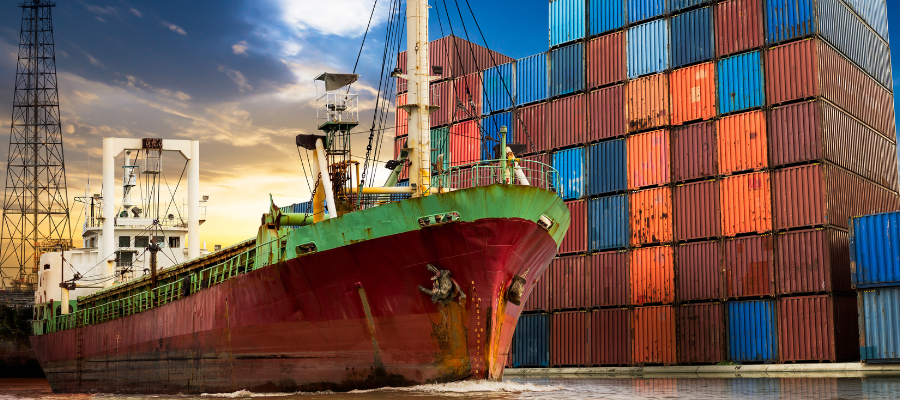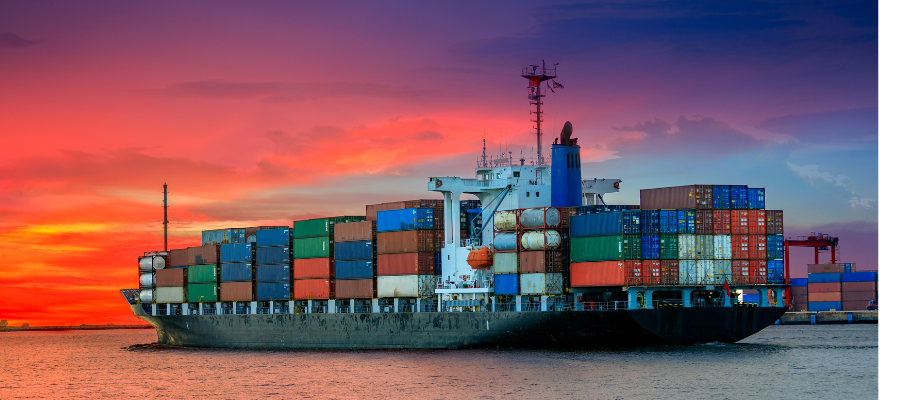🕒 Article read time: 5 minutes
Navigating net zero: The shipping industry's green transition

By Jesse Fahnestock, Director, Decarbonisation, Global Maritime Forum.
The shipping industry, a vital cog in the global economy, faces an unprecedented challenge: transitioning to a net zero future.
As the world grapples with the urgent need to mitigate climate change, the maritime sector-currently responsible for approximately 3% of global greenhouse gas (GHG) emissions - must accelerate its decarbonisation efforts. Without doing so, and with global trade predicted to rise, emissions from the maritime sector could reach up to 10% of greenhouse gas emissions by 2050.

The International Maritime Organization (IMO), the global authority responsible for shipping safety and reducing marine pollution, has introduced ambitious goals to achieve net zero emissions by 2050 as part of its Greenhouse Gas Emissions Strategy, which came into force in 2023. As part of these efforts, a key target for 2030 is to ensure that 5% to 10% of shipping fuel is derived from zero - or near-zero emission fuels.
Achieving net zero in shipping is complex due to the industry’s unique operational and technical constraints. Unlike other sectors where electrification or renewable energy can be more easily implemented, shipping involves large vessels operating across vast distances with long life cycles and fuel-intensive propulsion systems.
The rise of zero-emission fuels
The backbone of decarbonising shipping successfully will be the development and adoption of zero-emission fuels. Currently, the vast majority of the global fleet runs on heavy fuel oil, a highly polluting fuel source.
Several alternative fuel options are currently under consideration to replace it, including green ammonia, a carbon-free fuel with significant promise but requiring breakthroughs in storage, handling and safety protocols, which the industry is tackling through a number of pilot projects.
There’s also green methanol, another promising candidate, but one with significant production, storage and cost challenges due to its energy intensity and reliance on a source of renewable carbon.

Each of these fuels has advantages and drawbacks, and no single solution is expected to dominate in the short term. The path to decarbonisation will likely require a multifuel solution, with regional and operational differences dictating which fuel is best suited for particular trades and routes.
Projections from analysis conducted by the Global Maritime Forum and Arup, “Green Jobs and Maritime Decarbonisation”, show that shipping’s demand for zero-emission fuels could reach up to over 500 million tonnes by 2040, rising to 600 million tonnes by 2050, which will require trillions in capital investment. This can prove to be a boon for the Global South, where conditions are optimal for the production of zero-emission fuels, creating a new wave of green jobs across the supply chain, which could create up to four million opportunities by 2050.
Scaling zero-emission fuels
Scaling zero-emission fuels is a central goal for the industry, with the IMO setting ambitious targets of reaching 5% availability and striving for 10% by 2030.
Demand aggregation is a strategy that involves combining the purchasing power of multiple stakeholders to create a larger market for zero-emission fuels. This can help overcome the "chicken and egg" problem where producers hesitate to invest in large-scale production without sufficient demand, and shipping companies are reluctant to commit to long-term contracts for fuels that are still relatively expensive and limited in supply.
One example of demand aggregation is joint procurement, where groups of shipowners, operators, or charterers collaborate to purchase zero-emission fuels collectively. This can create a more attractive market for fuel producers, leading to lower prices and increased availability. Another approach is for a third-party, such as a port or national government, to play a match-making or even market-making role, connecting buyers and suppliers and possibly even running auctions for purchase and sale of the fuels. This can reduce the financial burden on individual shipping companies and encourage them to adopt zero-emission fuels.
Unlocking the flow of capital
Decarbonizing the shipping industry will require a monumental shift in capital allocation. Estimates suggest that the transition to net zero could require more than £1 trillion in additional investment by 2050. This will include investments in new fuels, ships, infrastructure, and supply chains. The financing challenge is not just about the size of the investment but about who will bear the cost.
Many shipping companies operate on razor-thin margins, and there is uncertainty over who should pay for the transition. Will it be shipowners, charterers, cargo owners, or even end consumers? The introduction of carbon pricing mechanisms such as the EU Emission Trading Scheme may help internalise the cost of emissions, but creating a truly level playing field will require robust policies from the IMO - policies that drive an early transition to new fuels and ensure that higher costs do not create an extra burden for the poorest and most vulnerable countries.
Financial institutions are also grappling with how to finance the shipping industry's transition. The Poseidon Principles, a voluntary initiative that aligns ship finance portfolios with climate targets, is an important step in the right direction. But further work is needed to unlock the vast sums of capital required to achieve net zero.
Governments and private investors will need to work together to create financial instruments that lower the risk of investing in green technologies and provide incentives for first movers.
The path forward
At the Global Maritime Forum, we believe that the shipping industry is capable of rising to this challenge. By seizing the opportunities presented by decarbonisation, the sector can not only reduce its environmental impact but also build a more resilient, innovative, and competitive future. The transformation to net zero shipping is not just an obligation—it is an opportunity for the industry to lead the way in shaping a sustainable global economy.
More Industry Insight from The Green Miles: Digital twinning: a critical tool for decarbonising transport

Published On: 03/01/2025 14:30:40
